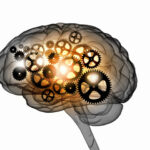Most adults have experienced insomnia at one time or another in their lives. There are three kinds of insomnia – transient that lasts less than a week, short term that generally lasts one to three weeks, and chronic that lasts longer than three weeks. Insomnia is usually a sign of a bigger problem. It is the symptom rather than the disease. Since there are different types of insomnia, there are different causes for it as well. Transient and short term insomnia tend to be linked to situational elements such as shift work, jet lag, life stress, or hospital stays or short-term physical difficulties such as having the flu or detoxing from a drug or alcohol addiction. Chronic insomnia tends to be linked to a medical or psychiatric condition of which insomnia is a symptom such as depression, anxiety, bipolar disorder, or schizophrenia. It is also a symptom of some kinds of drug addiction.
When treating insomnia there are quite a few different methods that have been explored in recent years. It seems that a combination of medications and cognitive behavior therapies works well for most people who are suffering. Medications for insomnia are fairly straightforward, but there are several different kinds of cognitive behavior therapies that are effect for the treatment of insomnia.
Insomnia Therapy Options
Stimulus Control Therapy
Stimulus Control Therapy is just like it sounds. Therapists ask patients to participate in a controlled set of factors that are intended to give the brain and body cues that it is time to sleep. Therapists will ask patients not to nap during the day as this sends the wrong message to the body and brain. Therapists encourage patients to go to bed when they feel tired and to set an alarm so that they get up at the same time every day regardless of whether or not they have slept well. Another element of stimulus control is regarding what happens in bed. Many people read, watch TV, eat, and generally hang out in bed. But if you have insomnia, these are the worst things you can do. Your bed should be for sleeping and that is all.
Sleep Hygiene Therapy
Along with Stimulus Control Therapy, a patient might also be asked to take on Sleep Hygiene Therapy as well. In Sleep Hygiene Therapy, a patient will do more work to keep his or her brain and body ready for sleep when the time it right. Patients will be asked to avoid forcing themselves to sleep and to sleep only as much as is necessary to feel rested rather than oversleeping all the time. Sleep Hygiene Therapy discourages smoking as nicotine is a stimulant, and drinking caffeinated or alcoholic beverages in the evening. Therapists will recommend that patients exercise for about 20 to 30 minutes each day, eat something small before going to bed so that the patient is not hungry, turn down the lights and the noise for 30 minutes before going to bed, and resolve any nagging issues before settling in for the night.
Relaxation Therapy
Relaxation Therapy, like Stimulus Control Therapy, is aptly named. Relaxation Therapy asks patients to practice relaxation techniques before attempting to go to bed. Meditation is a popular choice for relaxation techniques. Relaxation Therapy can also include muscle relaxation where the patient is asked to tense and relax each muscle in the body one at a time. It can also involve listening to soothing music and turning down the lights in the hour or so before trying to sleep.
Sleep Restriction Therapy
Sleep Restriction Therapy combines some of the elements from the other therapies mentioned. The essence of Sleep Restriction Therapy is that patients are asked to spend a very minimal amount time in bed. The patient and therapist set a rigid bedtime and a rigid rising time. Even if the patient does not sleep, this is all the time that he or she can spend in the bed. The potential sleep deprivation from the night before can ultimately help the patient sleep. He or she is also asked to stay away from large meals, extra beverages, and screen time before bed. The bedroom should be dim with limited noise and distraction. All work, reading, television watching, and eating should be done outside the bedroom. It should only be used for sleeping during the prescribed hours.




